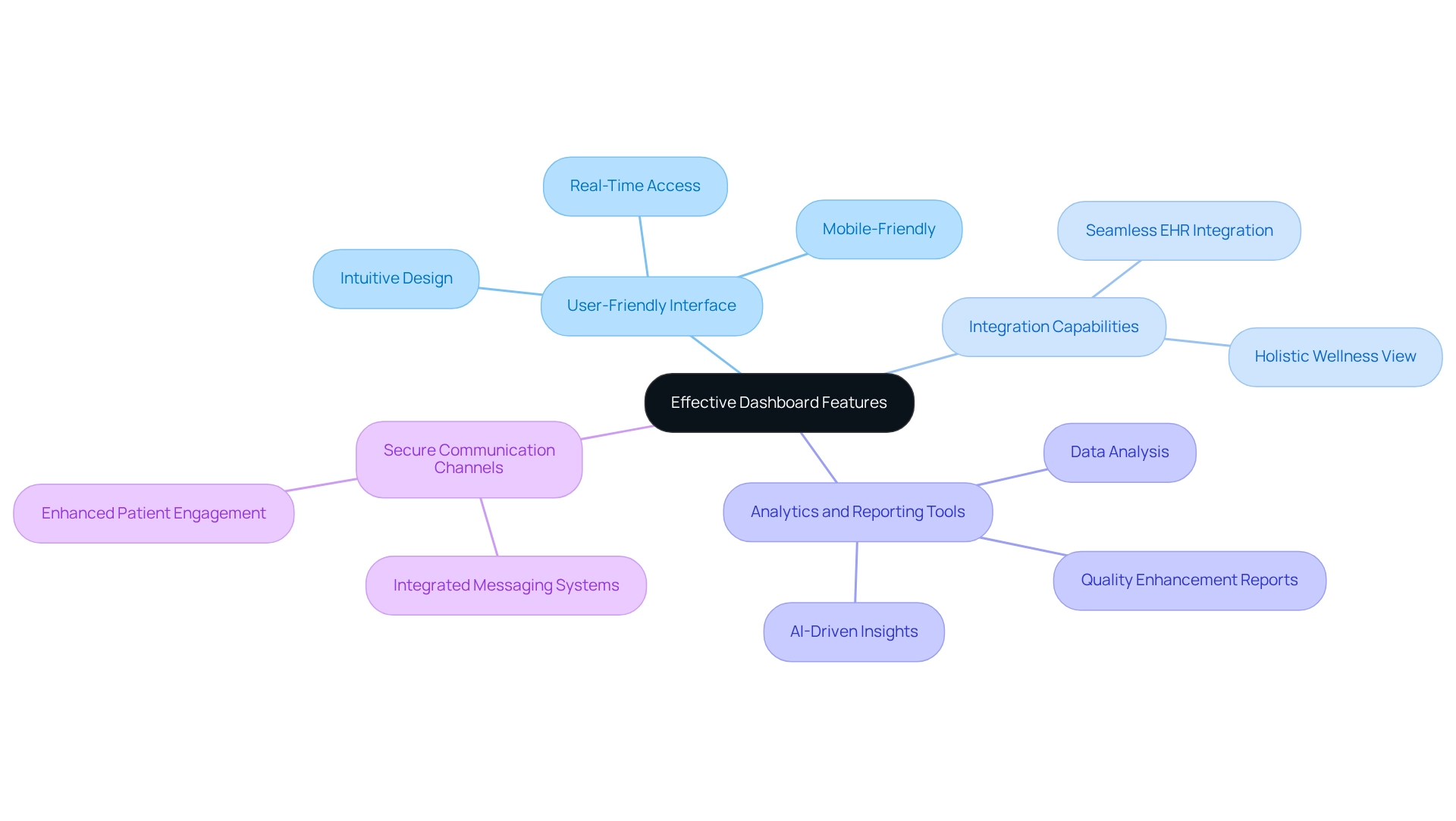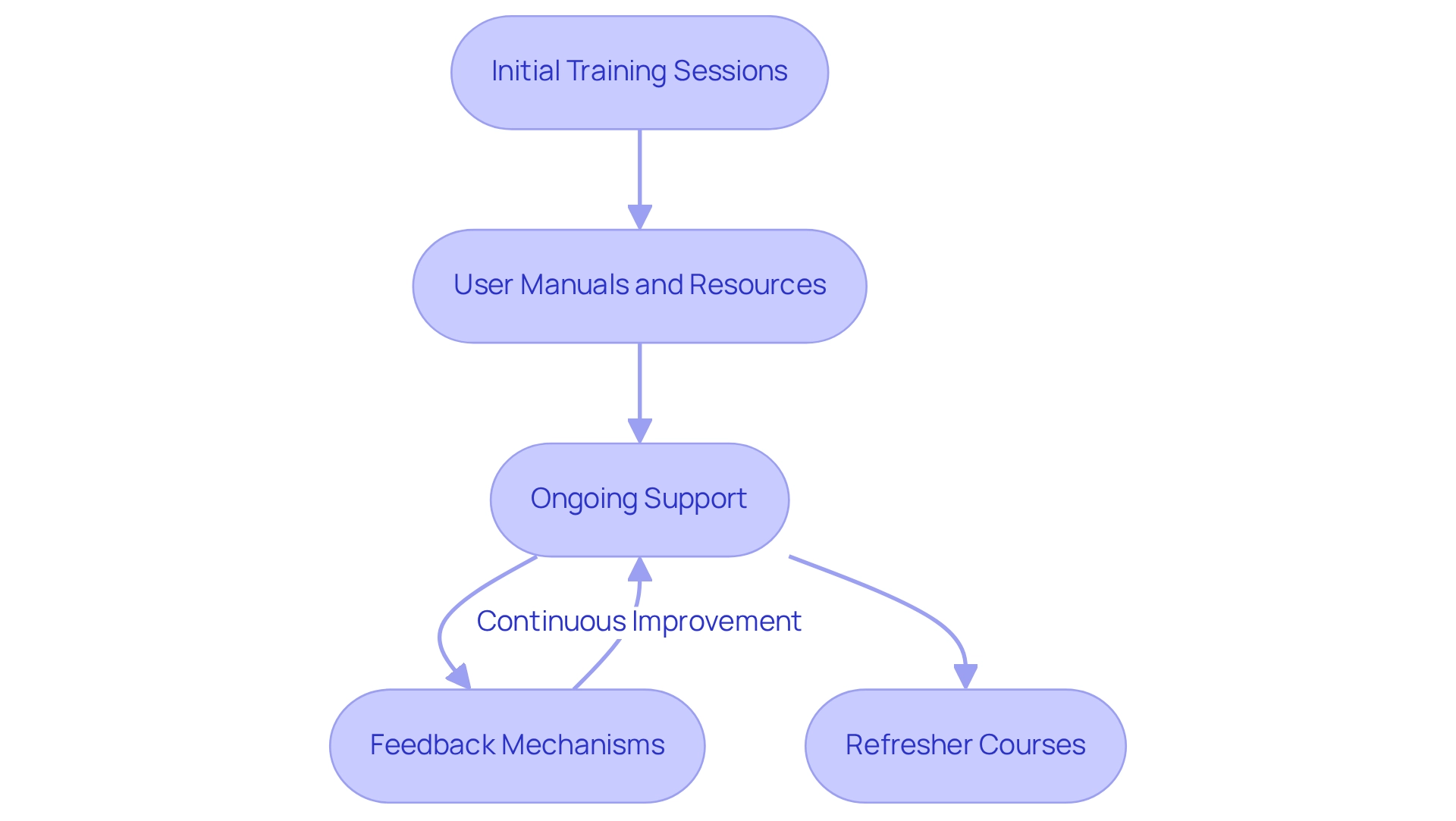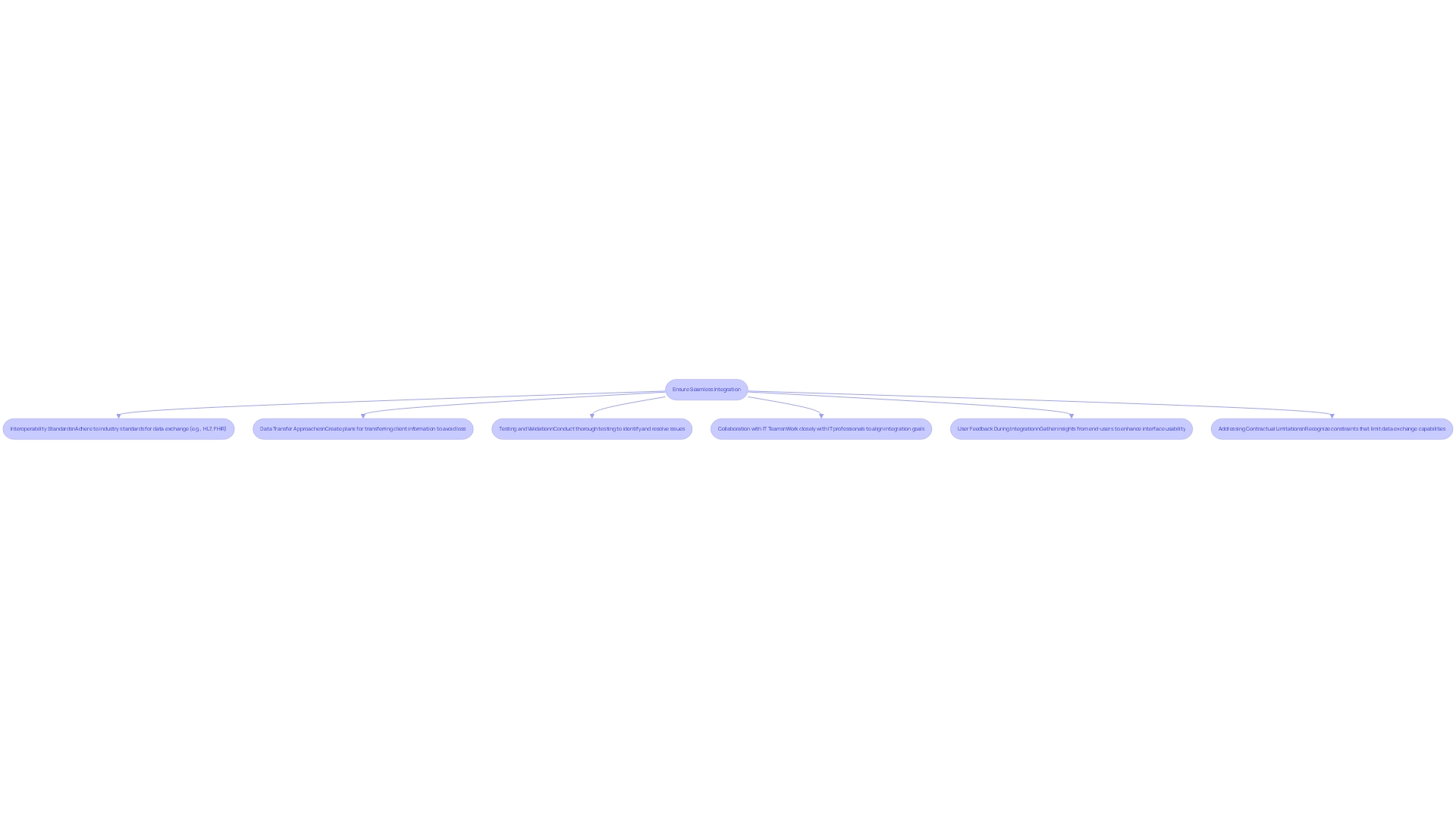Overview
In today's healthcare environment, providers often face emotional challenges that can impact their ability to deliver the best care. The implementation of a clinic note dashboard can be a beacon of hope, maximizing efficiency by streamlining medical documentation and enhancing communication among providers. Imagine a system that not only reduces administrative burdens but also improves real-time data access, ultimately leading to better patient outcomes.
Such dashboards foster integrated systems with user-friendly interfaces, making it easier for healthcare professionals to focus on what truly matters—their patients. By alleviating the stress of paperwork, these tools empower providers to engage more meaningfully with those they care for. Wouldn't it be wonderful to have more time for patient interactions?
The benefits of adopting a clinic note dashboard are clear:
- Improved communication
- Reduced workload
- Enhanced patient care
As we move forward, let’s embrace these solutions together and create a more nurturing healthcare environment. Your commitment to improving patient outcomes is invaluable, and exploring these innovative tools can make a significant difference.
Introduction
In the ever-evolving landscape of healthcare, managing patient documentation can feel overwhelming. Have you ever felt the weight of administrative tasks pulling you away from what truly matters—patient care? The clinic note dashboard emerges as a powerful ally, designed to streamline the recording and accessibility of clinical notes, alleviating those burdens. This centralized hub not only enhances communication among healthcare teams but also fosters improved patient outcomes through better coordination.
As the demand for seamless integration with existing systems and user-friendly features grows, the importance of well-trained staff and ongoing support cannot be overstated. Imagine a world where healthcare providers can focus more on their patients and less on paperwork. This article delves into the essential components of an effective clinic note dashboard, exploring its purpose, key features, training strategies, and the critical need for interoperability in today's healthcare environment. Together, we can transform the way we approach patient documentation, ensuring that care remains at the forefront.
Understand the Purpose of a Clinic Note Dashboard
A clinic note dashboard serves as a vital resource for healthcare professionals, easing the burden of medical documentation. Its primary aim is to simplify the recording of clinical notes, ensuring that all pertinent individual information is easily accessible and well-organized. By utilizing a control panel, providers can significantly reduce the time spent on administrative tasks, allowing them to focus more on the care of their patients. This approach aligns with CosmaNeura's mission to alleviate the administrative load on medical professionals, empowering them to deliver exceptional clinical experiences.
Moreover, a thoughtfully designed dashboard fosters improved communication among medical teams, ensuring that all members are aware of individual progress and treatment strategies. This enhanced coordination not only elevates the quality of care but also contributes to better patient outcomes. Have you ever wondered how much time could be saved by streamlining documentation? Recent studies indicate that medical professionals using centralized documentation systems report increased efficiency. For example, a healthcare provider in the European Union improved compliance with GDPR after implementing Folderit, illustrating the effectiveness of centralized documentation systems in boosting operational efficiency.
As Don Berwick, former Administrator of the Centers for Medicare and Medicaid Services, wisely noted, "Listening to individuals is the cornerstone of individual-centered care." This underscores the crucial role that effective communication and documentation play in delivering quality care. Additionally, the case study titled "" highlights a gap in the literature regarding optimal practices for aligning documentation techniques with specific clinical tasks and workflows, emphasizing the need for evidence-based guidelines that can support practitioners in selecting the most appropriate documentation methods for their needs.
As the medical landscape evolves, the introduction of the clinic note dashboard is becoming increasingly essential for enhancing both practitioner workflows and patient care. How can we ensure that healthcare providers feel supported in this transition? By embracing these innovative tools, we can work together to create a more compassionate and efficient healthcare environment.
Identify Key Features of an Effective Dashboard
Healthcare providers often face emotional challenges that can impact their ability to deliver the best care. An effective clinic note interface can alleviate some of these burdens, enhancing functionality and supporting providers in their vital roles.
User-Friendly Interface: A straightforward and intuitive design is essential. It allows users to navigate the dashboard effortlessly, minimizing the need for extensive training. This is crucial, as studies show that 74% of users are more likely to return to a mobile-friendly site, emphasizing the importance of accessibility in healthcare technology.
The clinic note dashboard enables real-time access and updates of individual information, ensuring that all team members have the most current data. This capability facilitates prompt decision-making and improves care. By leveraging AI technology, healthcare providers can enhance these processes, leading to more effective interactions and better outcomes. Additionally, the flexibility to create and modify note templates tailored to specific needs improves documentation efficiency and aligns with the increasing demands for precision medicine, ultimately enhancing care for individuals.
Integration Capabilities: Seamless integration with existing electronic health record (EHR) systems is necessary to prevent data silos and maintain comprehensive individual records within the clinic note dashboard. This integration fosters a holistic view of individual wellness, which is becoming increasingly vital in today’s medical landscape. AI can facilitate this integration, ensuring smooth data flow between systems and enhancing overall efficiency.
Analytics and Reporting Tools: The clinic note dashboard includes analytics capabilities that allow providers to analyze individual data and generate reports. These tools are essential for informed clinical decision-making and quality enhancement initiatives. With projected to reach US$ 52.2 billion by 2026, the reliance on data-driven insights is clear. AI-driven analytics can further deepen these insights, improving healthcare outcomes.
Secure Communication Channels: Integrated messaging systems promote secure interactions between healthcare professionals and individuals, enhancing engagement and follow-up care within the clinic note dashboard. This feature is increasingly important as personalized user experiences in medical devices lead to greater reliance on technology in daily operations. By utilizing AI, these communication channels can be optimized for better patient-provider interactions.
Together, these features not only enhance the efficiency of clinical documentation but also support the overarching goal of improving patient care while addressing the administrative burdens faced by healthcare providers. How can we ensure that these tools are effectively implemented to support you in your daily practice?

Provide Comprehensive Training and Support for Staff
Effective execution of a clinic note dashboard is essential, and it deeply relies on providing comprehensive training and ongoing assistance for all personnel. This training should encompass several key components:
- Initial Training Sessions: Conduct hands-on training that thoroughly covers the features, functionalities, and best practices of the clinic note dashboard for effective documentation.
- User Manuals and Resources: Create accessible user manuals and online resources that staff can easily reference as needed, promoting self-sufficiency.
- Ongoing Support: Establish a robust support system, utilizing the clinic note dashboard, where staff can seek assistance with any issues or questions that arise during their use of the interface, ensuring they feel supported throughout the transition.
- Feedback Mechanisms: Establish channels for staff to provide input on the interface's usability and propose enhancements, promoting a culture of ongoing improvement and attentiveness to user needs.
- Refresher Courses: Offer periodic refresher courses to keep staff updated on new features and best practices, ensuring they remain proficient and confident in using the clinic note dashboard.
Investing in comprehensive training and support not only enhances user confidence and satisfaction but also significantly contributes to improved patient care outcomes. As medical technology adoption continues to grow, the significance of effective training strategies cannot be overstated. According to Becker's Healthcare, "96% of providers use EHR systems; 55% of EHRs are hosted remotely," emphasizing the necessity of training in a technology-driven environment. Furthermore, a study titled "" underscores the importance of practical skills in training programs, emphasizing that well-trained staff are more likely to utilize new technologies effectively, leading to better overall performance in clinical settings.

Ensure Seamless Integration with Existing Healthcare Systems
For a clinic note interface to be effective, it must integrate seamlessly with , such as electronic health records (EHRs) and practice management software. This integration is not just a technical requirement; it addresses the emotional challenges healthcare providers face daily. When systems work together, it alleviates some of the administrative burdens that can detract from patient care.
Key considerations for ensuring seamless integration include:
- Interoperability Standards: Adhering to industry standards for data exchange, such as HL7 or FHIR, is essential for facilitating smooth communication between systems. These standards serve as the backbone for interoperability, enabling diverse healthcare technologies to work together efficiently. As Riken Shah noted, FHIR is often referred to as the missing link between the EHR and the millions of wearables and medical devices, highlighting its critical role in integration.
- Data Transfer Approaches: Creating clear plans for transferring existing client information into the new interface is essential to avoid loss or corruption. Successful data migration not only preserves the integrity of patient information but also enhances the overall functionality of the dashboard.
- Testing and Validation: Conducting thorough testing of the integration process is vital to identify and resolve any issues before full implementation. This step guarantees that the interface functions as intended, minimizing disruptions to clinical workflows.
- Collaboration with IT Teams: Close collaboration with IT professionals is necessary to ensure that the integration process aligns with organizational goals and technical requirements. Their expertise can help navigate potential challenges and streamline the integration process.
- User Feedback During Integration: Involving end-users in the integration process allows for gathering insights on their needs and preferences. This feedback is invaluable in ensuring that the interface meets workflow requirements and enhances user satisfaction.
- Addressing Contractual Limitations: It is important to recognize that contractual limitations can restrict data exchange capabilities between medical professionals and health vendors. Comprehending these constraints is essential for creating effective integration approaches.
By emphasizing smooth integration, medical organizations can greatly improve the functionality of the clinic note dashboard, leading to enhanced efficiency and care for individuals. CosmaNeura's AI solutions, including transcription, summarization, and billing automation, can further streamline these processes, ensuring that providers can focus more on care rather than administrative burdens.
Reflecting on the vast amounts of data generated in healthcare—an astounding 2.3 zettabytes in 2020 as highlighted by the World Economic Forum—underscores the necessity for effective data management and interoperability in modern healthcare systems. Furthermore, advancements in technology, as illustrated in the case study on 'Technological Advancements in Healthcare Interoperability,' have proven essential for overcoming interoperability challenges, enabling better access to health information and ultimately enhancing patient care. Let’s work together to create a more integrated and compassionate healthcare experience.

Conclusion
The clinic note dashboard represents a significant advancement in healthcare, thoughtfully designed to ease the administrative burdens that often impede patient care. By centralizing documentation, these dashboards foster improved communication among healthcare teams and ensure that vital patient information is readily accessible. This allows providers to devote more time to patient interactions, ultimately enhancing clinical outcomes.
Key features such as user-friendly interfaces, real-time data access, customizable templates, and seamless integration with existing systems play a crucial role in optimizing the dashboard's effectiveness. These functionalities not only streamline workflows but also empower healthcare professionals to make timely, informed decisions. Furthermore, the integration of analytics and secure communication channels enriches patient interactions and elevates the overall quality of care.
To truly unlock the benefits of a clinic note dashboard, comprehensive training and ongoing support for staff are indispensable. Equipping healthcare professionals with the right skills nurtures a culture of continuous improvement and responsiveness, leading to better patient care outcomes.
Moreover, ensuring seamless integration with existing healthcare systems is vital for successful implementation. Adhering to interoperability standards and employing effective data migration strategies not only safeguard patient information but also enhance the dashboard's functionality. As the healthcare landscape evolves, prioritizing these strategies will be essential in maintaining a steadfast focus on quality patient care.




